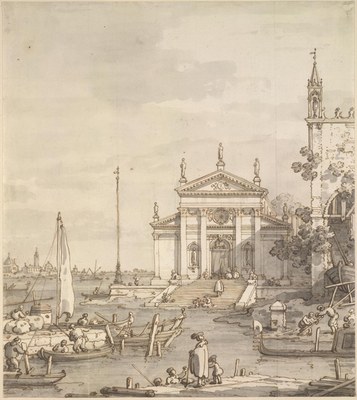Online-Workshop // Camilla Pietrabissa: On the move, in the city. Landscape drawing and (sub)urban culture in 18th-century Europe
Panofsky Fellow 2021
Landscape drawing has always been a fascinating and complex subject in European art. As a practice, it was carried out since the fifteenth century, although it has remained somewhat informal and elusive to historical reconstruction. As a pictorial genre, it has traditionally been placed at the bottom of academic theory and pedagogy. Between the seventeenth and eighteenth century, however, an emerging theory of artistic practice placed landscape drawing in a prominent position for the modern aesthetics of nature. This phenomenon is particularly visible in urban centers such as Paris, Venice and Rome, where the rise of urban and suburban mobility renovated an artistic interest in the surrounding landscape. Various phenomena, among which the destruction of military fortifications, the interpenetration of city and country, and the scientific investigation of natural environments, have prompted new perceptions of the rural areas surrounding cities. The drawings of these sites have created an image of the suburban landscapes as sites which stimulate the imagination.
This research project is concerned with the international circulation of knowledge about local landscapes in eighteenth-century Europe. The practice of landscape drawing was shared by art connoisseurs and amateurs, but also by natural scientists and architects, in solitary or collective expeditions. What technical and visual skills did these groups share in the representation of landscape? To what extent did these different professional figures share a common gaze on (sub)urban country areas? These questions point to a theory of the gaze which joins the local and the international levels: as the discourse constructed about place was constructed locally, the language representation in drawing had an international reach. This project offers the notion of local mobility as central to understand the renewal of the appreciation of nature in the early eighteenth century, all the while proposing the European resonance of such discourse at the threshold of modernity.
[Caption: Antonio Canal (Canaletto), Capriccio with a Palladian church like S. Giorgio Maggiore, boats, gondolas and figures in the foreground. Pen and brown ink, and grey wash, over black chalk © The Trustees of the British Museum]
____________
Diese Veranstaltung findet als internes Zoom-Meeting statt / This event takes place as an internal Zoom meeting.
